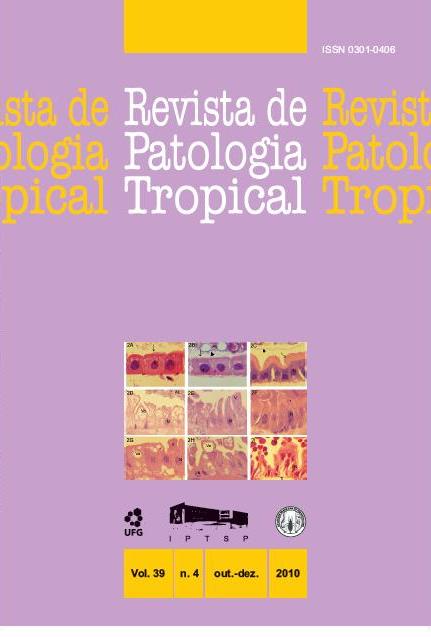Evidences for clustering of Schistosoma mansoni eggs in the sediment produced by Helmintex
DOI:
https://doi.org/10.5216/rpt.v39i4.13068Keywords:
Schistosoma mansoni, Coproparasitological diagnosis, Schistosomiasis, Low endemicity.Abstract
Diagnosis of schistosomiasis in low intensity transmission areas requires the improvement of methods in order to overcome the lack of sensitivity of classical coproparasitological methods. Helmintex is a new method based on the interaction of Schistosoma mansoni eggs with paramagnetic beads in a magnetic field. A preliminary seeding experiment gave support to a previous impression from routine examinations with Helmintex that eggs are usually found in the bottom half rather than in the upper half of the column of the sediment under examination. Nine replicas of one hundred eggs were seeded in uninfected 30g feces and each replica was submitted to Helmintex. The top 40 ?L aliquots of sediment were removed and sequentially examined under the microscope for enumeration of eggs. In 6 samples most of the eggs were found at the bottom half. This interesting finding may lead to an improved final step on egg isolation and better sensitivity for coproscopic diagnosis of schistosomiasis.Downloads
Downloads
Published
How to Cite
Issue
Section
License
The manuscript submission must be accompanied by a letter signed by all authors stating the full name and email address, confirming that the material has not been published or is under consideration for publication elsewhere, and agreeing to transfer copyright in all media and formats for Journal of Tropical Pathology. The authors will not be paid for published articles. They are solely responsible for the content of those articles, even if the Editor holds the right to adjust them to the norms of the journal.
The reviewers will not be paid for the peer review process.

